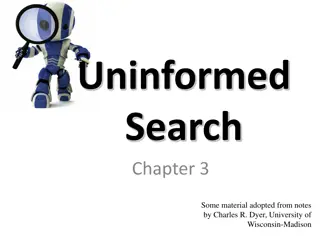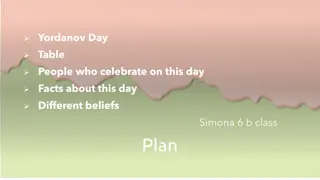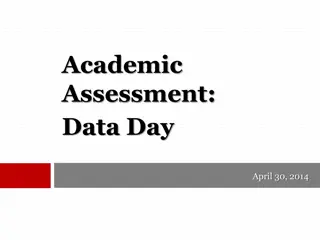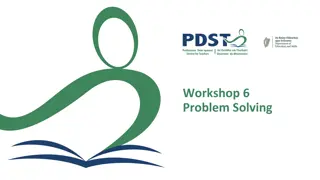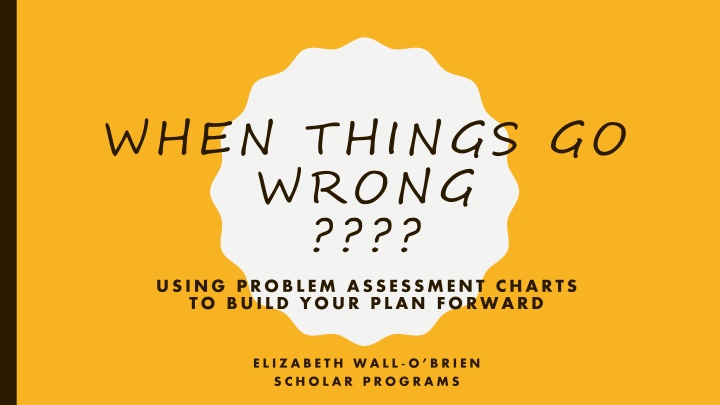
Building Your Plan Forward Using Problem Assessment Charts
Explore the process of problem assessment and planning with charts and frameworks to move forward effectively. Learn how to rethink, revise, and align goals for successful outcomes. Dive into careful planning and evaluation techniques for better event management. Understand the importance of data gathering and hypothesis development for addressing unexpected challenges.
Uploaded on | 1 Views
Download Presentation

Please find below an Image/Link to download the presentation.
The content on the website is provided AS IS for your information and personal use only. It may not be sold, licensed, or shared on other websites without obtaining consent from the author. If you encounter any issues during the download, it is possible that the publisher has removed the file from their server.
You are allowed to download the files provided on this website for personal or commercial use, subject to the condition that they are used lawfully. All files are the property of their respective owners.
The content on the website is provided AS IS for your information and personal use only. It may not be sold, licensed, or shared on other websites without obtaining consent from the author.
E N D
Presentation Transcript
WHEN THINGS GO WRONG ???? USING PROBLEM ASSESSMENT CHARTS TO BUILD YOUR PLAN FORWARD E L I Z A B E T H W A L L - O B R I E N S C H O L A R P R O G R A M S
DISCUSSION OVERVIEW Review: Surprise: Rethink: Revise: Questions: Assessment Check List We have a problem! Problem Assessment Charts/Concept Maps Assessment is ongoing ????????????????
BIG PICTURE: ITS AN ALIGNED PLAN! Mission Goal Goal Objective Objective Objective
SMART OBJECTIVES/OUTCOMES Specific S Measurable/Observable (Frequency, Duration, Intensity) M A Attainable R Realistic T Time Driven
CHECK LIST Problem Feedback Research Evaluate Develop Plan Revise
CAREFUL PLANNING. EXAMPLE AN EVENT FOR STUDENTS SET UP DETAILS Select time Invite speakers/panelists Set up event on E&I Set up technology Order Food Publicize Prepare Develop pre-tests/post-tests Monitor RSVP Find Space Scheduling Promotion Preparation Implementation Evaluation
IF YOU BUILD IT THEY WILL COME ?? We monitored RSVPs on the CRM We sent email reminders The numbers looked great We prepared sign- in sheets Printed out Pre-Post tests Made sure to include event feedback forms We assigned a college assistant to monitor attendance and pre/post test administration WE WERE READY!!!! WE WERE READY!!!!
WHERE ARE THEY? Students who said they would come, did not attend!!!! Fortunately many students who did not submit RSVPS, showed up ????? Questions:We know students need and want these events so what s going on here? What kind of assumptions did we make?
GATHER DATA ASK QUESTIONS Question the answers Test assumptions Pre-test /Post Test Interviews Survey Consult DEVELOP HYPOTHESES Brainstorm!
PROBLEM ASSESSMENT CHARTS Heavily used in public health to identify underlying causes of barriers to health Provides a way to look at problems through interdisciplinary/multi- systemic lenses Evidence driven Designed to show complex relationships
PROBLEM ASSESSMENT BRAINSTORM KEEP BRAIN STORMING Many students take Wednesday s off Other obligations compete Students work on Wednesdays Students want to attend but academic pressures intervene especially if an event is planned near midterm/final exams or something comes up . Many of our students have labs at Brookdale on Wednesdays Students don t read emails The time is not convenient There are competing events The location is not convenient Students don t know about the event
FACTORS AFFECTING ATTENDANCE AT EVENTS Other Scheduling Promotion Competing Events Methods ? ? Tracking Work Labs Conflict Dean s Hours Reliability Email? Off
WORK BACKWARDS Timing of Event Group Influences Student Variables Competition Individual Influences Shift in Priorities PROBLEM Student Attendance at Events ???? Program ???? Program Planning Variables Promotion Communication Methods Other Variables ????
USE A DECISION MATRIX High Importance High Changeability High Importance Low Changeability Low Importance Low Changeability Low Importance High Changeability
USING ASSESSMENT TO FIND ANSWERS . 1. Articulate the Problem 2. Brainstorm potential causes 3. Map the results using Problem Assessment Diagrams 4. Look for common themes and trace the problem to the source 5. Make recommendations and craft a new plan 6. Test the plan and revise as needed













